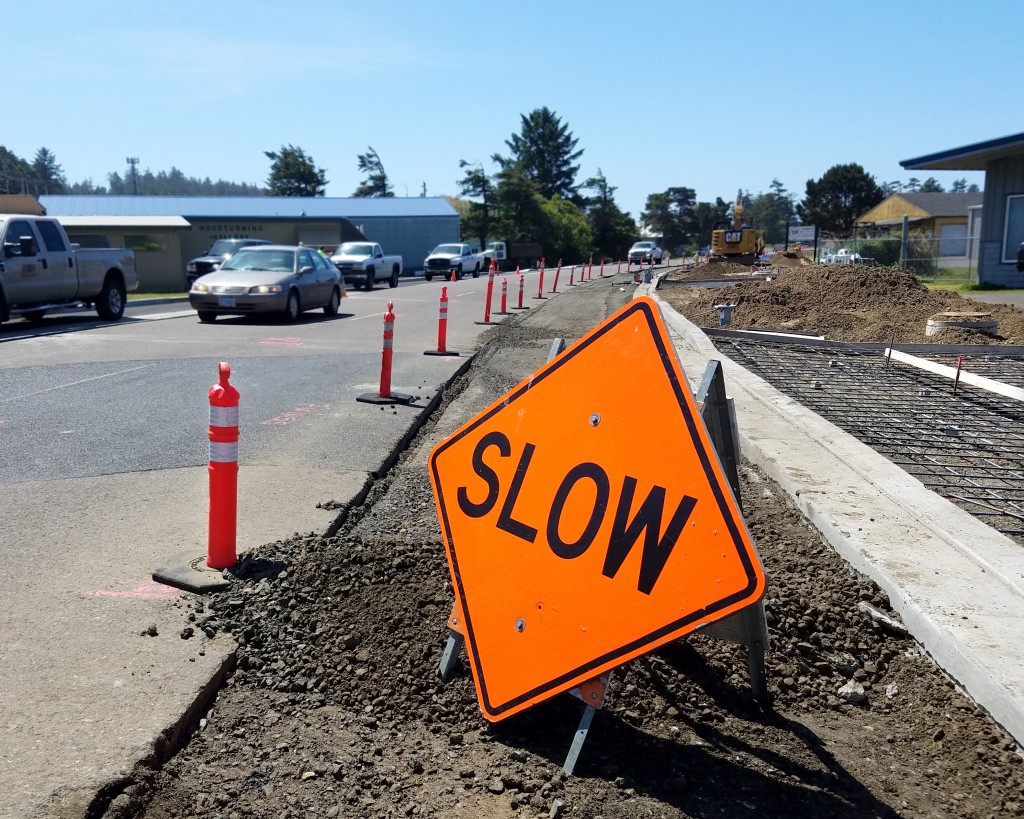How do you measure the value of a conservation area? That question looks deceivingly simple because ‘value’ is defined differently by each person. 
For example, consider road construction. A city may choose to widen an existing road to improve traffic flow (which, as a side note, is currently happening in front of our office building – see photo). Improved traffic flow benefits local businesses and commuters. But, some residents may have to give up portions of their property to make room for construction. As a result, they might perceive that same construction as a negative outcome.
This begs the question: How do you measure tradeoffs when comparing positive outcomes for one group of people versus the negative outcomes to another?
How do you measure tradeoffs when comparing positive outcomes for one group of people versus the negative outcomes to another?
This example is analogous to competing values in conservation. Creating a new wilderness area, designating a wild and scenic river, or creating marine reserves all provide conservation benefits. However, there are tradeoffs. Assessing these natural resource tradeoffs involves complex, interdisciplinary research in the field of human dimensions.
What is Human Dimensions Research?
Human dimensions research is the study of natural resource issues, and the ways people value and use the natural environment. Such studies tackle broad questions, such as measuring the near and long term effects of a conservation policy. While ‘value’ is most often linked to economics, human dimensions studies embrace many social science disciplines. For example, value can be applied in a cultural context, such as the sense of identity people derive from a landscape they love and have used for generations.
Value can be applied in a cultural context, such as the sense of identity people derive from a landscape they love and have used for generations
However, these types of values are abstract and not easily quantified. For those reasons, human dimensions research encompasses not only economics, but also includes other social sciences such as anthropology, social psychology, and/or sociology. Each of these disciplines offers a different angle, and unique perspective, from which to address the effects of conservation on different people.
How is Human Dimensions Research Being Applied to Oregon’s Marine Reserves?
In the case of marine reserves, closing an area to fishing has potential short and long term economic and cultural costs, countered by the potential for long term ecological gains. Dr. Tommy Swearingen, Human Dimensions Project Leader for the ODFW Marine Reserves Program, partners with a diversity of social scientists to address a range of human dimensions research questions. For example: What is the cost of fishing displacement from marine reserve implementation? Or, what are benefits associated with this conservation effort?
The ODFW Marine Reserves Program, working in collaboration with research partners, is developing pioneering methods for human dimensions marine research here in Oregon. Results of this research will help better inform policy related to marine conservation tradeoffs and contribute to the broader realm of natural resource policy and management.
This year ODFW will be releasing multiple human dimensions reports from several of our marine reserves research projects. This work will shed light on some of the issues facing nearshore ocean management, and include: a demographic analysis of the Oregon Coast, a sociological pilot study of the impacts of marine reserves on the Garibaldi fishing community, an economic analysis to estimate the potential value of fishing displaced from marine reserves, and an evaluation of agency and marine reserves support among residents.
The upcoming reports will be available in the Resource Library on the Oregon Marine Reserves website, so stay tuned.
